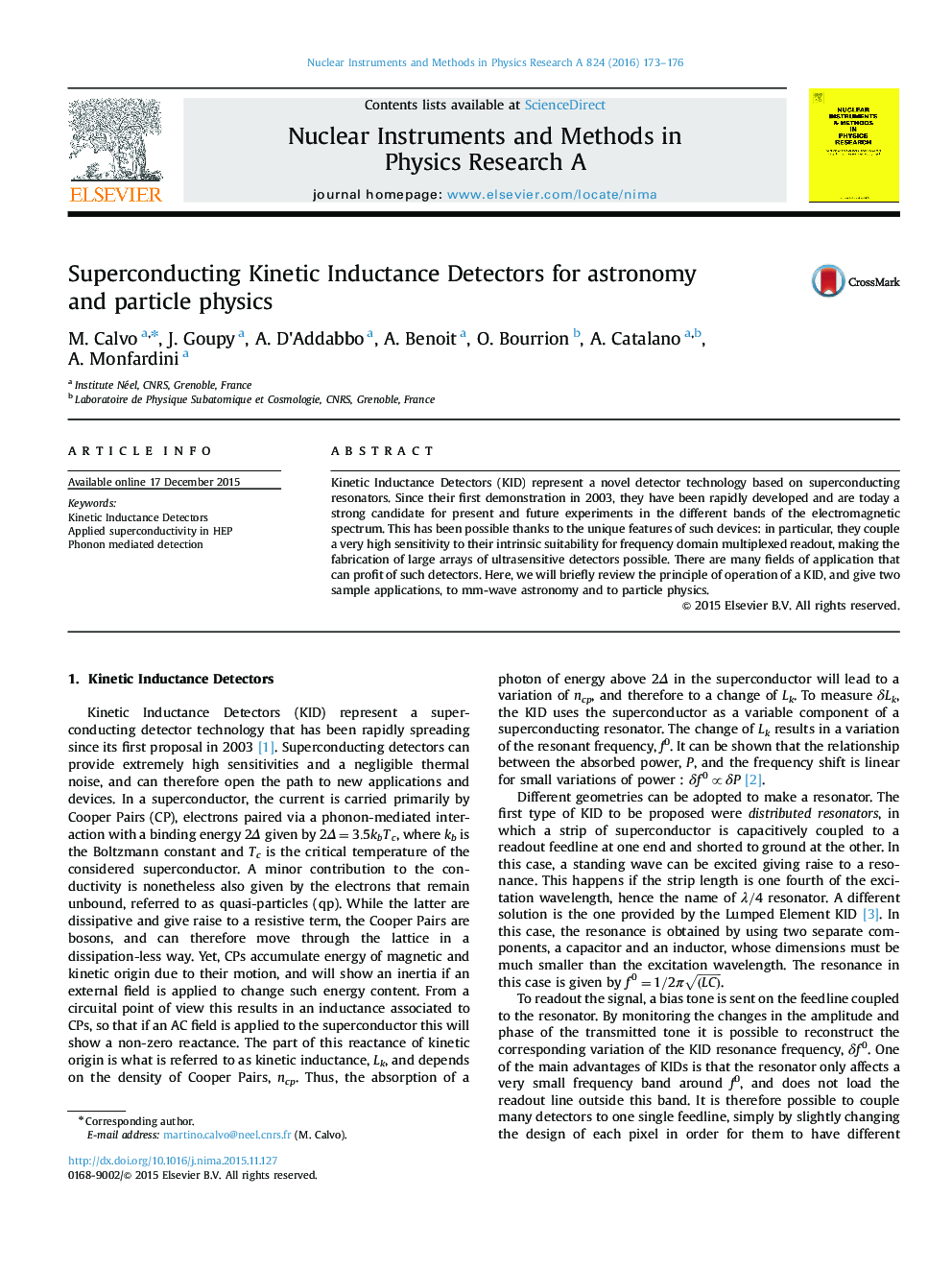| Article ID | Journal | Published Year | Pages | File Type |
|---|---|---|---|---|
| 8169901 | Nuclear Instruments and Methods in Physics Research Section A: Accelerators, Spectrometers, Detectors and Associated Equipment | 2016 | 4 Pages |
Abstract
Kinetic Inductance Detectors (KID) represent a novel detector technology based on superconducting resonators. Since their first demonstration in 2003, they have been rapidly developed and are today a strong candidate for present and future experiments in the different bands of the electromagnetic spectrum. This has been possible thanks to the unique features of such devices: in particular, they couple a very high sensitivity to their intrinsic suitability for frequency domain multiplexed readout, making the fabrication of large arrays of ultrasensitive detectors possible. There are many fields of application that can profit of such detectors. Here, we will briefly review the principle of operation of a KID, and give two sample applications, to mm-wave astronomy and to particle physics.
Keywords
Related Topics
Physical Sciences and Engineering
Physics and Astronomy
Instrumentation
Authors
M. Calvo, J. Goupy, A. D׳Addabbo, A. Benoit, O. Bourrion, A. Catalano, A. Monfardini,
